Research Plan Assignment: The Case of Walmart
Question
Task
Your task is to write a research plan assignment by convincing an organisation’s Board to approve the cost of employees being given time away from their normal duties to conduct the research that you are proposing.
Answer
1. Introduction
Rapid urbanization and technological advancements have paved the way for business organizations to cater to the needs of the customers in an effective and efficient manner. One of the key resources that a business organization caters to is the human capital which they employ within the business organization (Kaufman, 2016). The workers within working community aim to satisfy the needs of the customers of the business organization through the attainment of the goals and objectives of the business. Staying profitable and maximizing it in the long run is the fundamental objectives of every business organization for which there are several functional areas within it to look after different functions of the business. These functional areas of the business organization include finance, sales and marketing, human resource management, supply chain management and operations. Human Resource Management (HRM) caters to the issues related to compensation of employees, performance management, organizational development, safety and wellness of the employees along with aspects such as employee satisfaction, motivation and instances of training and development (Kansal, 2019).
Walmart Inc. is considered to be a globally renowned retail chain of hypermarkets, supermarkets and discounted departmental stores with its headquarters in Bentonville, Arkansas. It was founded by Sam Walton in 1962 since then it has earned a revenue of about $523.96 billion by 2019. Since Walmart is a high-volume store, its entry into a potential new market can have a profound effect on its market rivals. The HRM of the company is considered to be large scale since it is established in a number of countries and has several subsidiaries (Stankevi?i?t?, Grunda & Bartkus, 2012). This study is a research plan for Walmart, a leading business organization in the retail sector which aims to analyse the key aspects through which the company can improve its HRM practices where the research aim and problem relevance has been mapped out along with the research question. This study also contains a literature review pertaining the aspects related to various HRM practices followed by the methodology section which discusses the proposed data collection and analysis methods.
2. Research Aim and Objectives
2.1 Research Aim and Problem Relevance
To understand the key aspects of HRM practices of Walmart and to analyse how the effectiveness of such HRM practices can be improved for the business.
2.2 Research Question
- What are the ways through which Walmart can improve its HRM practices?
- What are the impacts of implementing new HRM practices in the company for its growth?
- What are the future implications of the incorporation of new HRM practices by Walmart within the company?
3. Literature Review
3.1 Four Primary Practices discussed in “What Really Works”
As per the views of the authors Alfes, Truss, Soane, Rees & Gatenby (2013), setting up a lucrative incentive system within an organisation can improve the management by the HR department within the company. This is because it will be a source of motivation and inspiration for them and help in reuniting the interest of the organisation with the employees. The incentive system should be based on well-defined quantitative targets and objectives that should be achieved by the employee before getting rewarded. It should be noted that the incentive system of the organisation should take into account the achievements of the individual goals and the collective gaols of the employees. This will encourage the workers in the company to focus on their own targets and work efficiently within a group. The authors further state the types of incentives that can be offered to the employees which will increase their productivity which consist of bonus, promotion, insurance benefits, stock options and corporate discounts. Other non-monetary incentives include longer breaks, gifts, short holidays, flexible working hours and so on. According to Andersson, Kazemi, Tengblad & Wickelgren (2011), it has been observed that an attractive incentive system within the organisation by the HR department will ensure its improvement and increase the productivity of the employees within a business organisation.
A study by Giauque, Anderfuhren-Biget & Varone (2013), suggests that if an organisation follows a fair evaluation system that can link the organisational objectives and priorities with the performance of the individuals, then it will further strengthen the HRM practices of the company. It is considered that fair evaluation of the employees will create motivation and inspiration within them and increase their productivity. For the internal functions of the company to be well coordinated, the HRM department should set up a well-defined monitoring and reporting system for its workers. The authors further suggests that if the evaluation system is based over the year then it will be fairer for the workers in the company. However, the monitoring system of the employees should be quarterly, and a performance evaluation should be step up as part of best practices for improving the efficiency of the HRM. Obtaining cross-functional feedback from the managers of every functional area can lead to the setting up of a fair evaluation system by the HRM of an organisation (Hallinger & Lu, 2012).
According to Inkinen, Kianto & Vanhala (2015), one of the primary practices of improving the HRM practices for multinational organisations is to improve the competence management and performance evaluation within the organisation. This ensures to reconcile the motivation and interests of the business organisation with the employees working there. If a business organisation is able to define competence with clarity, then it is possible to manage it further for improving the HRM practices that can create internal competitive advantage for the company. Moreover, as per the authors the identification of individual skills and ability is also crucial for competence management for improving the HRM practices within a company. The HRM practice should also include the proper assessment of the skills and abilities of the employees and have a strategic plan to improve these set of skills in the future (Stankevi?i?t?, Grunda & Bartkus, 2012). Furthermore, it has been observed by the authors that if the organisation is able to define the targets quantitatively, then the collective performance of the employees increases which leads to the improvement in the HRM practices of the organisation.
As per the views of Taamneh, Alsaad & Elrehail (2018), alignment of the business strategies with the HRM policies of the organisation is considered to be one of the best practices of the HRM for its improvement. This can be interpreted by stating that the HRM of an organisation should understand the requirements of the business for its expansion and the needs of the employees. If the HRM of a company provides motivation and encouragement to the employees, then it is possible to increase their productivity which will be beneficial for the company that can be considered to be its competitive advantage. By understanding the business strategies, the HR department will be able to conduct selective hiring of suitable skills and train them accordingly. This will create self-managed and efficient teams within the company which will create an egalitarian and flat organisation by making required information available to the employees. Therefore, it is required for the HRM department of a global business organisation to maintain cognitively diverse teams within the company and for their high-performance (Lichtenstein & Johansson, 2011). The authors further states that individual personality monitoring and assessments will also ensure the improvement of the HRM practices of an organisation.
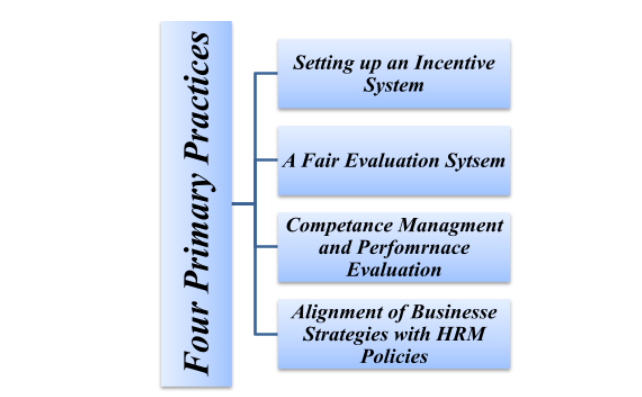
Figure 1: The Four Primary Practices to Improve HRM within an Organisation
(Source: Sopow 2020)
3.2 Benchmarking Literature
A business organization caters to a sense of competency model through which they can aim to improve the efficiency as well as the effectiveness of the employees of the business organizations. The competencies can be categorized into two categories: Core competencies and leadership/ managerial competencies. A core competency is known as the basis for a form of strategic direction through which a business organization can outperform their competitors in a chosen market (Kaufman, 2015). The workforce model of Walmart that operates in the retail sector need to be nurtured in terms of creating strategic value through which the company can aim to satisfy the needs of the customers and aim to improve their brand image as well as its market share. The core competencies map out the values and objectives established by management of the business organization which needs to be adhered to by the employees so that the employees can form a sense of quality orientation that provides utmost customer satisfaction within the retail sector (Song, 2018).
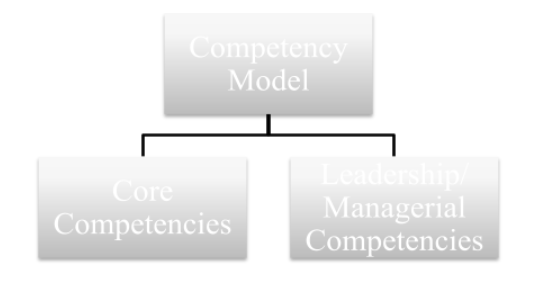
Figure 2: The Competency Model
(Source: As created by author)
Another crucial aspect of the Human Resources Management department is to train and develop their employees through which they can retain their top talent within the organization and help the business survive in the long haul (Busse, 2016). In such instances, the leaders and managers have a crucial role to play through which they motivate and train their teams to achieve organizational value and success. Such managers and leaders cater to various forms of leadership styles and techniques along with the implementation of positive and negative reinforcements so that the leaders of Walmart can not only aim to develop their people but also help them to become future leaders themselves in the near future (Thite, 2018). The human resource department of the business organizations can cater to the competency model to improve the individuals or groups of individuals working in various departmental heads. For example, an area sales manager can aim to include such competencies through effective planning, team working, and analysing competitors within a market and develop a form of strategic thinking and decision making (Thite, 2018).
To develop a competency model within the human resource department of an organization there are effectively three ways through which the businesses can aim to achieve them. The first is the research-based approach where the highly functioning executives of the business organization are asked to showcase their personal experiences in terms of organizational hardships and behavioural incidents where the executives thrive and achieve organizational success (Xie, 2019). Such insights are demonstrated within the working community through which the employees of Walmart can understand the key aspects of business turmoil and improve their skills within the organization to achieve collective organizational success (Timilsina, 2015). The second way is known as a strategy-based approach where the management of the business organization develops new policies within the human resource department that aim to achieve organizational success and value.
The management engages in a brainstorming process where certain strategies are developed in terms of competency requirements for its employees. Such competency requirements may be better benefits, technological advancements and enhanced training operations through which a sense of organizational change can be brought upon within the working community that drives the business towards collective success (Cumming, 2020). Finally, the management can cater to a value-based approach which emphasizes on the aspect that leaders and managers of a business organization learn the different cultural values that the employees possess and develop an interpersonal relationship with them in order to understand their needs and opinions within the working community (Ghosh, 2018). Developing such interpersonal relationships helps the leaders and managers to motivate their workers in an effective and efficient manner through which a sense of open-ended communications system is established between the managers and the workers; the managers can respond to the opinions expressed by the workers and act upon it that ensure the satisfaction levels among the employees are at optimum levels that help to achieve organizational value and success (Olivas-Lujan, 2019).
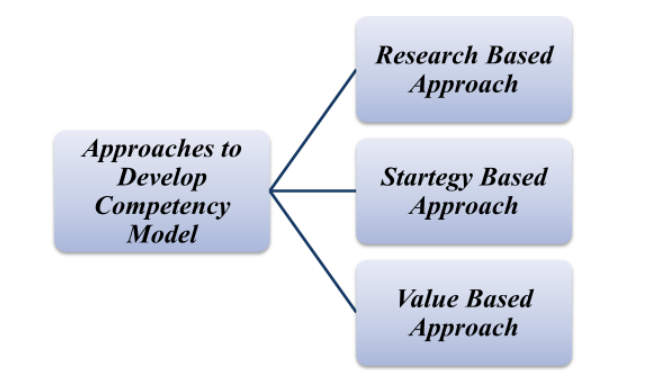
Figure 3: Approaches to Develop Competency Model
(Source: As created by author)
3.3 Summary
The four primary practices which works well for the improvement of the HRM practices of an organisation are setting up a lucrative incentive system within an organisation, a fair evaluation system that can link the organisational objectives and priorities with the performance of the individuals, improve the competence management and performance evaluation within the organisation and alignment of the business strategies with the HRM policies of the organisation. As per the views of Hallinger & Lu (2012), these will enable the improvement of the HRM practices within the company and yield beneficial effects for it in the long run. The productivity of the employees increases which creates an internal competitive advantage for the organisation.
The human resource management caters to a broad scope of managerial practices that help a business organization to enhance the abilities of their workers through which a sense of organizational change, value and success can be generated. The literature discuss the crucial aspects of the human resource department which aim to diversify a business model through the collective approach of the leaders/ managers and the workers within the working community. For business organizations that operate on a global scale, such as Walmart, the management of the business organization has to heavily invest in their employees where the individuals and groups of individuals within the working community are satisfied at all times (Lichtenstein & Johansson, 2011). The management should ensure that the workers do not lose their morale even in times of turmoil and economic breakdowns and the workers must be compensated with benefits, incentives and other facilities that helps to keep the employees motivated at all times.
According to Kaufman (2016), due to the growing competition levels on a global scale; the workers who seek for employment opportunities now do not only cater to the salary packages but they also cater to the brand image and recognition of the organization that they chose to work for as it provides them with a sense of enhanced social status and recognition. The research, strategy and value based approach are certain theories within the human resource practices of business organizations through which the businesses can aim to improve their employees within the working community and achieve organizational success but the theories are only effective when they are implemented by proper leaders and mangers that aim to train and develop their workers in order to provide utmost customer satisfaction within various markets of an industry.
4. Methodology
4.1 Proposed Data Collection Methods
According to Amaya, Leclere, Carris & Liao (2015), for undertaking a study, there can be two types of data collection methods that can be administered by the researcher which are the primary data collection method and the secondary data collection method. It should be noted that statistical sources are used for data collection when it is required for official or academic purposes, whereas non-statistical sources of data are used when the study is conducted informally or for personal use. Primary data collection is when data is collected directly from the source which can be considered to be first-hand data. Such data is considered to be pure and original in nature and has not undergone any statistical treatment but is used in its raw form (Cleary, Horsfall & Hayter, 2014). There are several methods of primary data collection which are in the form of a personal investigation, collection of data through investigators, using structured or semi-structured questionnaires and telephonic conversations. Secondary data collection method is regarded as collection of data from primary sources that is already collected from the source previously. Such data has undergone prior statistical treatment and is considered to be refined and treated data (Ruggiano & Perry, 2019). Sources of secondary data include the official publications, academic journals or articles, data published by government, renowned and authentic articles or newspaper and so on.
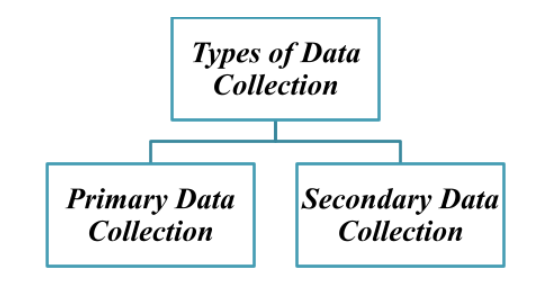
Figure 4: Types of data Collection Methods
(Source As created by author)
For undertaking this study, the collection of primary data has been considered by using questionnaires which will be distributed within a selected sample size. The sample size that is being considered for the interview will be 30 participants who will be selected using simple random sampling technique. Simple random sampling has been used for avoiding bias in the sample selection process and choose the sample size using a fair and equal chance for every participant within the universal sample (Cleary, Horsfall & Hayter, 2014). The questionnaire that has been used is semi-structured and consists of open-ended questions. Through this interview the scholar will be observing the opinions of the selected participants regarding what practices should be implemented in the HRM of a organisation such as Walmart for further improvement.
Furthermore, the scholar has also considered the use of secondary data from authentic sources which will enable the scholar to conduct a systematic literature review for exploring the related works in the considered area of focus. Using both the primary and secondary sources of data collection will bring rigor to the study being conducted and help in understanding the strengths and weakness of the study (Johnston, 2017). It is also regarded that integrating the primary and secondary methods of data collection will be suitable for the research because it is based on a globally renowned retail company, Walmart, which requires the consultation of external data published in authentic sources. Using these techniques is further justified because of the type of data that is being collected by the scholar from the primary and secondary sources which is qualitative in nature. Deeper understanding of the research problem identified can be explored by the integration of the primary and secondary data collection methods and analysing them using the appropriate methods. It will also enable the scholar to structure and execute the study in a coherent manner that will yield beneficial results.
4.2 Proposed Data Analysis Methods
From the previous subsection of the study it is apparent that the primary data will be collected by the scholar using a questionnaire to interview the selected participants within the sample. Such a technique of data collection is used because the study is primarily based on using qualitative data. While analysing the possible improvements of HRM practices within a globally renowned business organisation like Walmart, it is apparent that the type of data that will be collected related to this area will be qualitative in nature. The secondary data collected for this study is also qualitative in nature which does not involve any numerical data and the use of statistical or mathematical tools and techniques. Therefore, for analysing the data that has been collected by the scholar will be using the qualitative data analysis rather than the quantitative data analysis. According to Stuckey (2015), qualitative data analysis involves answering the reasons behind the behaviour of people towards a certain aspect or concept. This form of data analysis does not involve any calculations or use of mathematical and statistical tools and techniques to support the study with empirical evidence. Rather, qualitative research is used to understand the underlying relations and patterns of the non-numerical data collected from various sources that will help in achieving a generalised inference regarding the research questions (Mayer, 2015).
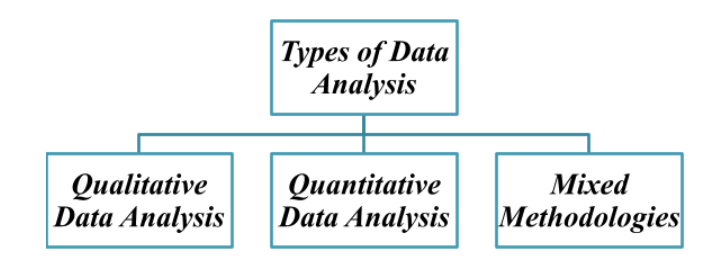
Figure 5: Types of Data Analysis
(Source: Sopow 2020)
The scholar will be conducting a qualitative data analysis for analysing the data collected because of several advantages. Such data analysis helps in conducting a detailed study and provides depth to the research. The attitudes, behaviours and feeling of the participants towards a certain area can be analysed using the qualitative analysis. As per the views of Harding (2018), through using a qualitative analysis of data, the study will have an openness which will enable further exploration and inclusion of different opinions regarding the area of focus. Qualitative data analysis is considered to be a flexible approach in making a generalised informed decision from the inferences obtained by the researcher (Richards & Hemphill, 2018). This is more apparent when the scholar is not able to capture the useful insights from the data sources then qualitative approach will be helpful in investigating whether the data has any significant patterns or relations. Furthermore, qualitative data analysis is regarded as more targeted and speculative about the area which is being studied by the scholar (Graue, 2015). Therefore, the data that will be collected by the scholar will be analysed using the qualitative data analysis method.
5. Estimated Cost
5.1 Estimated Cost in Terms of Time
Estimating cost in terms of time is crucial for undertaking project for producing a reasonably reliable and accurate conception of the topic in the project. By phasing out the project, the scholar will obtain an idea regarding the time required for the completion of the project and outline the financial budget for the project (El Bajta et. al., 2015). Furthermore, a definitive time cost estimation of the project will ensure a static budget to be maintained by the scholar. Costs can be divided by segmenting the project into phases and using a Gantt Chart to do so.
|
Week 1 |
Week 2-3 |
Week 4-5 |
Week 6 |
|
|
Topic Selection |
||||
|
Searching Relevant Articles |
||||
|
Collection of Primary Data |
||||
|
Segmenting Data |
||||
|
Analysing Data |
||||
|
Interpreting Results and Conclusion |
Table 1: Gantt Chart to Estimate Time taken for Project
(Source: As created by author)
5.2 Estimated Financial Cost
Financial cost estimation of the project will enable the scholar to understand the expenses that will be incurred during the project. Such supporting details maintains the accuracy of the project execution and planning of the project. Estimated financial cost for undertaking the project by the scholar can be determined using the Gantt Chart phases of the project.
|
Phases of the Project |
Estimated Cost (in $) |
|
Topic Selection |
$0 |
|
Searching Relevant Articles |
$20 |
|
Preparing the questionnaire |
$30 |
|
Collection of Primary Data |
$100 |
|
Segmenting Data |
$0 |
|
Analysing Data |
$10 |
|
Interpreting Results and Conclusion |
$0 |
|
Total |
$160 |
Table 2: Financial Estimation of Project Cost
(Source: As created by author)
5.3 Other Resources
Other resources that has been used for undertaking the project is various hardware such as office and home computers, printers to print the questionnaires for handing them out to participants physically and software tools such as MS Word and MS Excel.
6. Conclusion
Global business organisations needs effective internal management by a regulatory department to maintain efficiency and effectiveness in the inter departmental functions of the company. This effective management of the people and resources of the organisation is carried out by the HRM department. They help in mitigating the gap between the performance of the employees and the strategic goals and objectives of the organisation that will help in the achievement of competitive advantage against market rivals. Also, if the organisation undertakes further improvement of the practices followed by the HRM department, it will be able to ensure employee satisfaction that will lead to increased productivity which is beneficial for the organisation. Walmart Inc. being the biggest global chain of retail hypermarkets has a well developed HRM department. But upon exploration it has been revealed that there is extensive scope for the improvement of the HRM practices that prevails within the organisation. This has led the scholar to undertake the collection of relevant data form reliable and academic secondary sources using journals and articles and analyse them using the qualitative data analyses. It can be concluded by observing that the HRM practices at Walmart can be improved using the several suitable and best methods.
References
Alfes, K., Truss, C., Soane, E. C., Rees, C., & Gatenby, M. (2013). The relationship between line manager behavior, perceived HRM practices, and individual performance: Examining the mediating role of engagement. Human resource management, 52(6), 839-859.
Amaya, A., Leclere, F., Carris, K., & Liao, Y. (2015). Where to Start: An Evaluation of Primary Data-Collection Modes in an Address-Based Sampling Design. Public opinion quarterly, 79(2), 420-442.
Andersson, T., Kazemi, A., Tengblad, S., & Wickelgren, M. (2011). HRM practices in Swedish retailing. In 21st Nordic Academy of Management (NFF) conference (pp. 20-24).
Busse, R., Warner, M., & Zhao, S. (2016). In search of the roots of HRM in the Chinese workplace. Chinese Management Studies.
Chen, K., Tao, G., Ding, L. Q., Junqing, H. A. O., Wang, T., Haddad, E., & Bitincka, D. (2018). U.S. Patent No. 10,007,710. Washington, DC: U.S. Patent and Trademark Office.
Cheng, H. G., & Phillips, M. R. (2014). Secondary analysis of existing data: opportunities and implementation. Shanghai archives of psychiatry, 26(6), 371.
Cleary, M., Horsfall, J., & Hayter, M. (2014). Data collection and sampling in qualitative research: does size matter?. Journal of advanced nursing, 473-475.
Cumming, D., Filatotchev, I., Reinecke, J., & Wood, G. (2020). New investor categories, agility and HRM: The case of sovereign wealth funds. Human Resource Management Review, 30(1), 100694.
El Bajta, M., Idri, A., Fernández-Alemán, J. L., Ros, J. N., & Toval, A. (2015, April). Software cost estimation for global software development a systematic map and review study. In 2015 International Conference on Evaluation of Novel Approaches to Software Engineering (ENASE) (pp. 197-206). IEEE.
Ghosh, V., & Tripathi, N. (2018). Cloud computing and e-HRM. e-HRM: Digital Approaches, Directions & Applications, 106-122.
Giauque, D., Anderfuhren-Biget, S., & Varone, F. (2013). HRM practices, intrinsic motivators, and organizational performance in the public sector. Public Personnel Management, 42(2), 123-150.
Graue, C. (2015). Qualitative data analysis. International Journal of Sales, Retailing & Marketing, 4(9), 5-14.
Hallinger, P., & Lu, J. (2012). Overcoming the Walmart syndrome: Adapting problem-based management education in East Asia. Interdisciplinary Journal of Problem-Based Learning, 6(1), 16-42.
Harding, J. (2018). Qualitative data analysis: From start to finish. SAGE Publications Limited.
Harney, B., & Dundon, T. (2020). Amazon: HRM and change in the house of neo-liberalism. In Case Studies in Work, Employment and Human Resource Management. Edward Elgar Publishing.
Inkinen, H., Kianto, A., & Vanhala, M. (2015). Knowledge management practices and innovation performance in Finland.
Johnston, M. P. (2017). Secondary data analysis: A method of which the time has come. Qualitative and quantitative methods in libraries, 3(3), 619-626.
Kansal, T. (2019). Green HRM: An Approach to Green Employees and Green Organization. ITIHAS The Journal of Indian Management, 9(4), 7-13.
Kaufman, B. E. (2015). Market competition, HRM, and firm performance: The conventional paradigm critiqued and reformulated. Human Resource Management Review, 25(1), 107-125.
Kaufman, B. E. (2016). Globalization and convergence–divergence of HRM across nations: New measures, explanatory theory, and non-standard predictions from bringing in economics. Human Resource Management Review, 26(4), 338-351.
Lichtenstein, N., & Johansson, E. (2011). Creating hourly careers: a new vision for Walmart and the country. Rapport pour l’organisation Jobs with Justice.
Mayer, I. (2015). Qualitative research with a focus on qualitative data analysis. International Journal of Sales, Retailing & Marketing, 4(9), 53-67.
Olivas-Lujan, M. R. (2019). Blockchains 2019 in e-HRM: Hit or Hype?. In HRM 4.0 For Human-Centered Organizations. Emerald Publishing Limited.
Richards, K. A. R., & Hemphill, M. A. (2018). A practical guide to collaborative qualitative data analysis. Journal of Teaching in Physical Education, 37(2), 225-231.
Ruggiano, N., & Perry, T. E. (2019). Conducting secondary analysis of qualitative data: Should we, can we, and how?. Qualitative Social Work, 18(1), 81-97.
Song, X. (2018, June). A Study on Management Model of Human Resources in Multinational Companies Based on Cultural Differences--Taking Walmart as an Example. In 2018 International Conference on Sports, Arts, Education and Management Engineering (SAEME 2018). Atlantis Press.
Stankevi?i?t?, E., Grunda, R., & Bartkus, E. V. (2012). Pursuing a cost leadership strategy and business sustainability objectives: Walmart case study. Economics and Management, 17(3), 1200-1206.
Stuckey, H. L. (2015). The second step in data analysis: Coding qualitative research data. Journal of Social Health and Diabetes, 3(01), 007-010.
Taamneh, A., Alsaad, A. K., & Elrehail, H. (2018). HRM practices and the multifaceted nature of organization performance. EuroMed Journal of Business.
Thite, M. (2018). 16 Future directions in electronic/digital HRM. e-HRM: Digital Approaches, Directions & Applications, 75.
Timilsina, B. (2015). Competitively Distinct Operations as a Key for Superior and Sustainable Business Performance: An Example from Walmart. Management (18544223), 10(3).
Xie, Y., & Cooke, F. L. (2019). Quality and cost? The evolution of Walmart's business strategy and human resource policies and practices in China and their impact (1996–2017). Human Resource Management, 58(5), 521-541.
Appendix
Interview Questions
- What style of management should be followed for obtaining maximum efficiency from employees?
- As a HR manager what is the method used by you to monitor and evaluate the performance of the employees?
- How can a positive workplace environment be maintained by the HR manager of an organisation for its improvement?
- How would you design a fair evaluation system and how often will you carry out employee evaluation within the organisation?
- As a HR manager how will you demonstrate the understanding of business strategies for achieving best performance from employees?
- How will you select suitable candidates for the post?
- What methods will you adopt to assess giving bonus to employees within the organisation?












